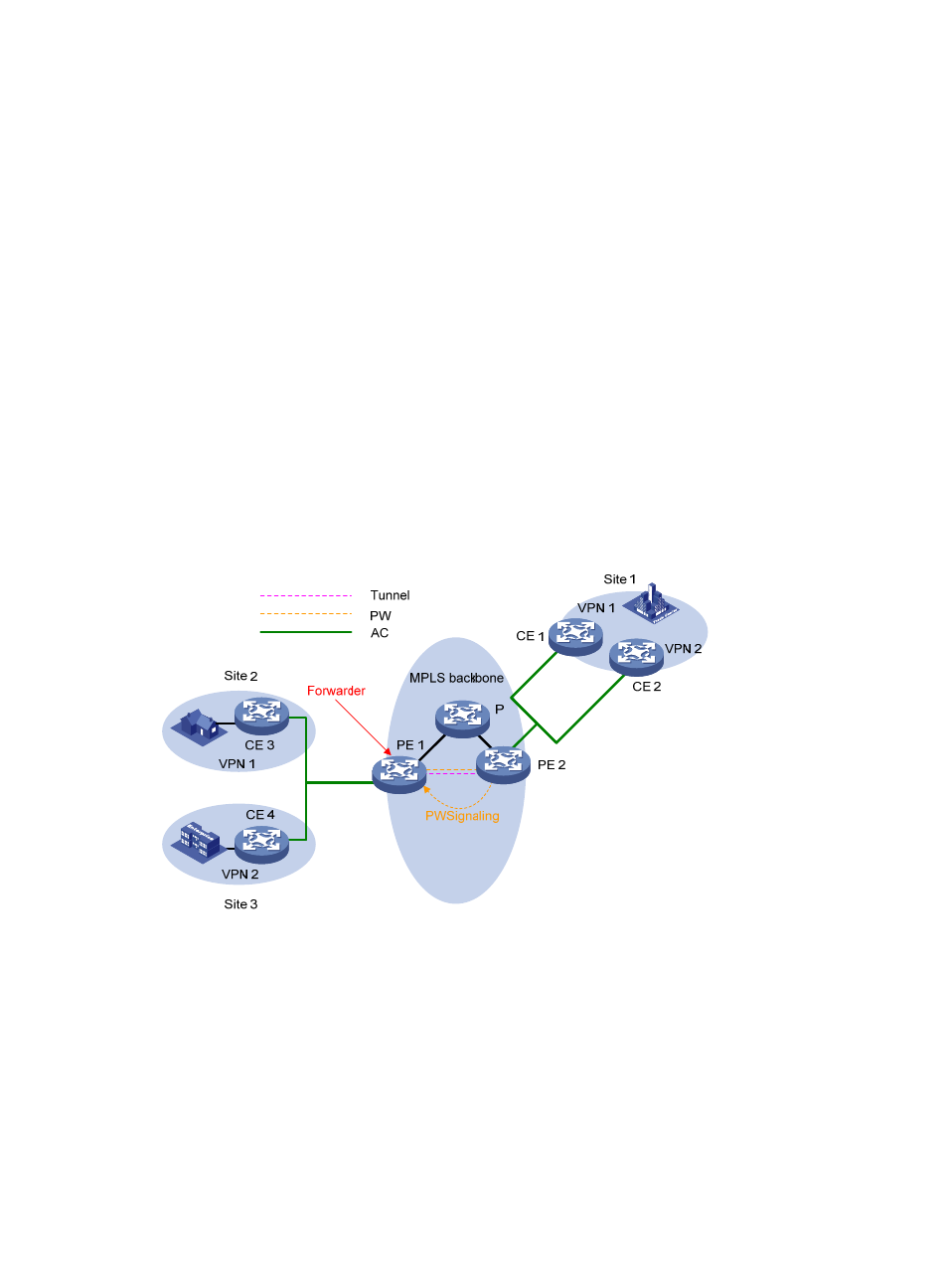Mac address learning and flooding – H3C Technologies H3C S10500 Series Switches User Manual
Page 172

161
•
QinQ
802.1Q in 802.1Q, a tunneling protocol based on 802.1Q. It offers a point-to-multipoint L2VPN service
mechanism. With QinQ, the private network VLAN tags of packets are encapsulated into the public
network VLAN tags, allowing packets to be transmitted with two layers of tags across the service provider
network. This provides a simpler Layer 2 VPN tunneling service.
•
Forwarders
A forwarder functions as the VPLS forwarding table. Once a PE receives a packet from an AC, the
forwarder selects a PW for forwarding the packet.
•
Tunnel
A tunnel, usually an MPLS tunnel, is a direct channel between a local PE and the peer PE for transparent
data transmission in-between. It is used to carry PWs. A tunnel can carry multiple PWs.
•
Encapsulation
Packets transmitted over a PW use the standard PW encapsulation formats and technologies: Ethernet
and VLAN.
•
PW signaling
The PW signaling protocol is the fundament of VPLS. It is used for creating and maintaining PWs and
automatically discovering VSI peer PE. Two PW signaling protocols are available: LDP and BGP.
Figure 38 Network diagram for VPLS
MAC address learning and flooding
VPLS provides reachability by MAC address learning. Each PE maintains a MAC address table.
1.
Source MAC address learning
MAC address learning includes the following parts:
•
Remote MAC address learning associated with PWs
A PW consists of two unidirectional VC LSPs. A PW is up only when both of the VC LSPs are up. When
the inbound VC LSP learns a new MAC address, the PW must map the MAC address to the outbound VC
LSP.
•
Local MAC address learning of interfaces directly connected with users
